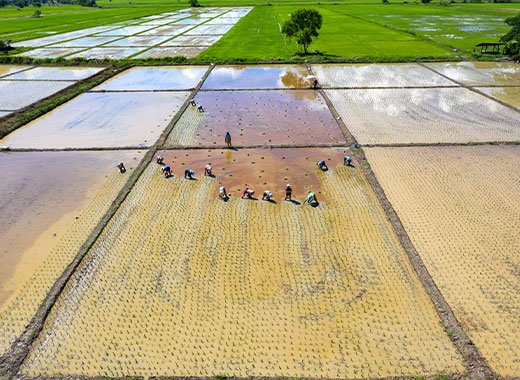
Agriculture infrastructure subsidy is an initiative by the Government of India to provide financial assistance to farmers and agribusinesses for the development of agriculture infrastructure.
The main objective of the scheme is to enhance the agriculture infrastructure in the country and promote private sector investment in the agriculture sector.
Under the scheme, the government provides a subsidy of up to 33.33% of the total project cost, with a maximum limit of INR 2.5 crore for a project. The scheme covers a wide range of agriculture infrastructure, including cold storage, pack houses, grading and sorting units, ripening chambers, warehouses, silos, and market yards.
To avail of the agriculture infrastructure subsidy, farmers and agribusinesses need to submit their proposals to the National Bank for Agriculture and Rural Development (NABARD). NABARD assesses the proposal and forwards it to the respective state government for approval. Once the proposal is approved, the subsidy is released to the beneficiary’s account in a phased manner based on the progress of the project.
The agriculture infrastructure subsidy is a significant step towards the development of the agriculture sector in India. It helps farmers and agribusinesses to modernize their infrastructure and enhance their competitiveness in the market. The scheme also contributes to creating job opportunities and promoting the overall economic development of the rural areas.
How to apply?
To apply for the agriculture infrastructure subsidy in India, farmers and agribusinesses need to follow the below-mentioned steps:
- Prepare a detailed project report (DPR) for the proposed agriculture infrastructure project. The DPR should include project details such as the cost, location, and design.
- Approach the nearest branch of NABARD or any other scheduled commercial bank to obtain a loan for the project. The loan amount should be at least 10% of the project cost.
- Submit the DPR along with the loan application to the bank. The bank will assess the feasibility of the project and forward it to NABARD for further evaluation.
- NABARD will review the project proposal and conduct a site visit to verify the feasibility and potential of the project.
- Upon approval of the project, NABARD will disburse the subsidy amount in installments to the beneficiary's account.
- The beneficiary is required to complete the project within the stipulated time frame and provide regular progress reports to NABARD.
- Once the project is completed, the beneficiary needs to submit the project completion report to NABARD along with the final cost statement.
- NABARD will conduct a post-project appraisal and verify the completion of the project before releasing the final installment of the subsidy.
Important!
Overall, these agriculture infrastructure subsidy schemes of the Government of Gujarat aim to promote the development of modern infrastructure in the agriculture sector and provide better value addition to the farmers’ produce.
The Government of Gujarat has also launched various schemes to provide agriculture infrastructure subsidies to farmers and agribusinesses in the state, aimed at improving the overall agriculture infrastructure, promoting the use of modern farming techniques and technologies, and enhancing the income of farmers.
The Government of India has launched several schemes to provide agriculture infrastructure subsidies to farmers and agribusinesses in the country, aimed at promoting the development of modern infrastructure in the agriculture sector and providing better value addition to the farmers’ produce.